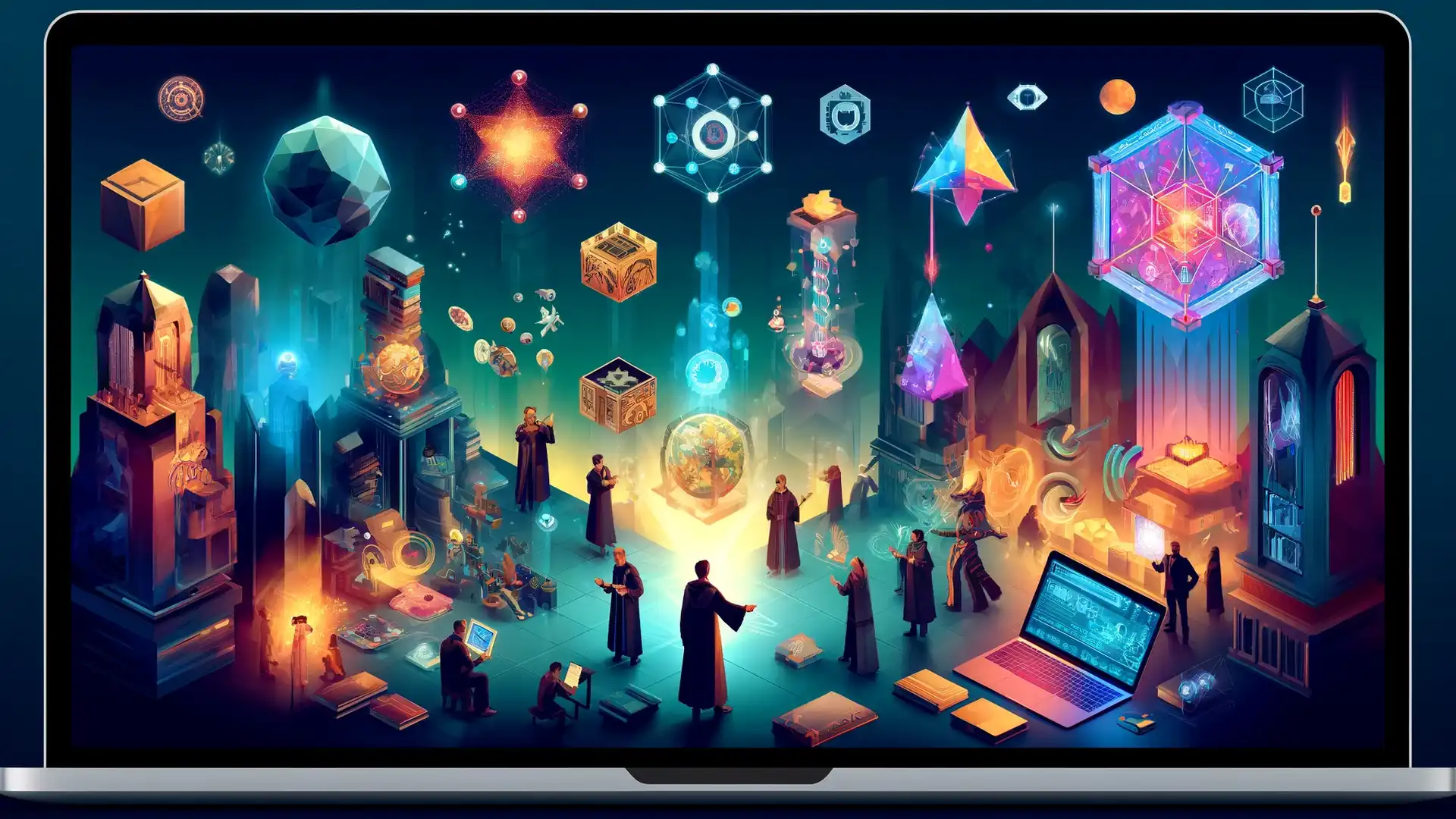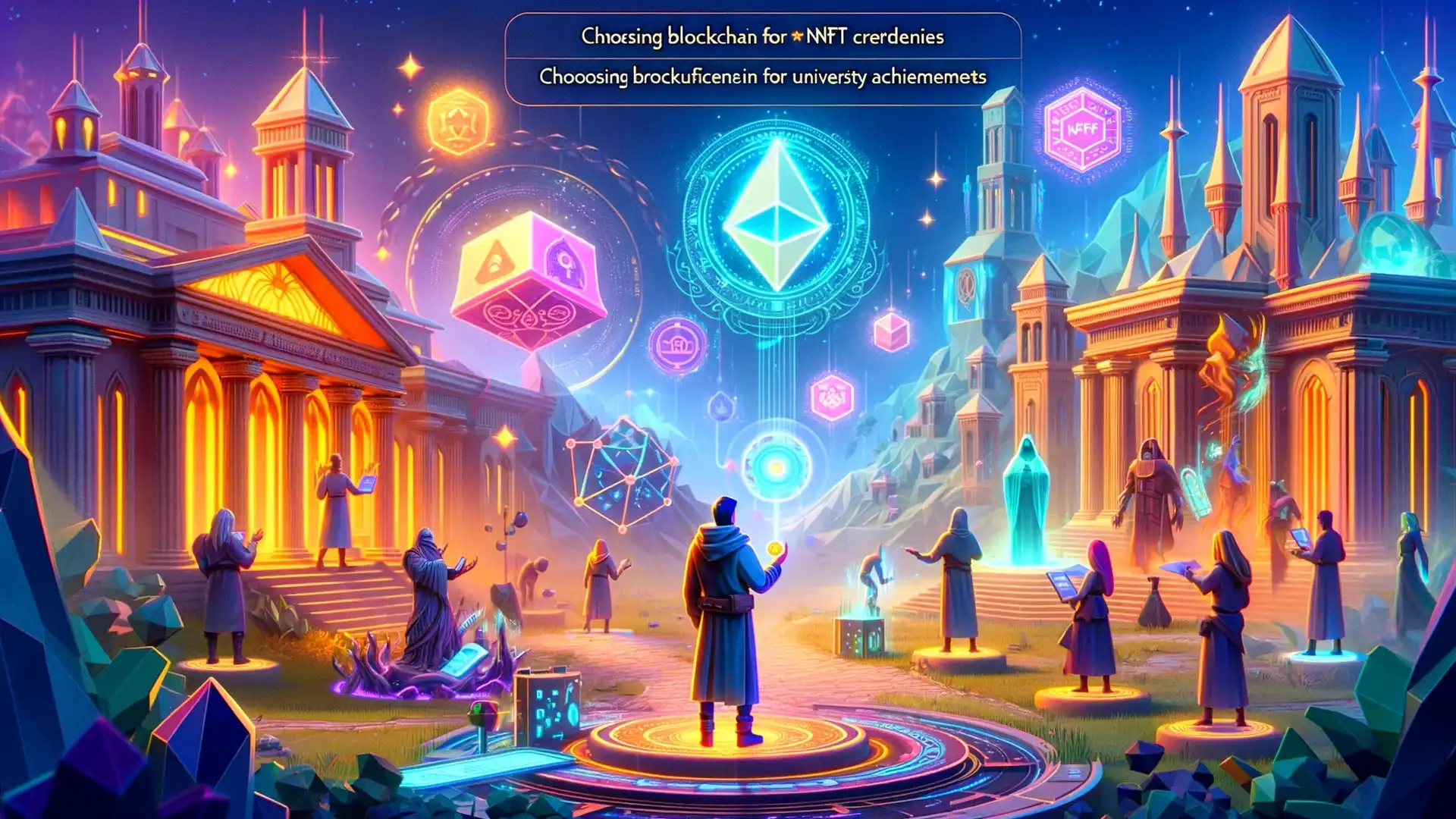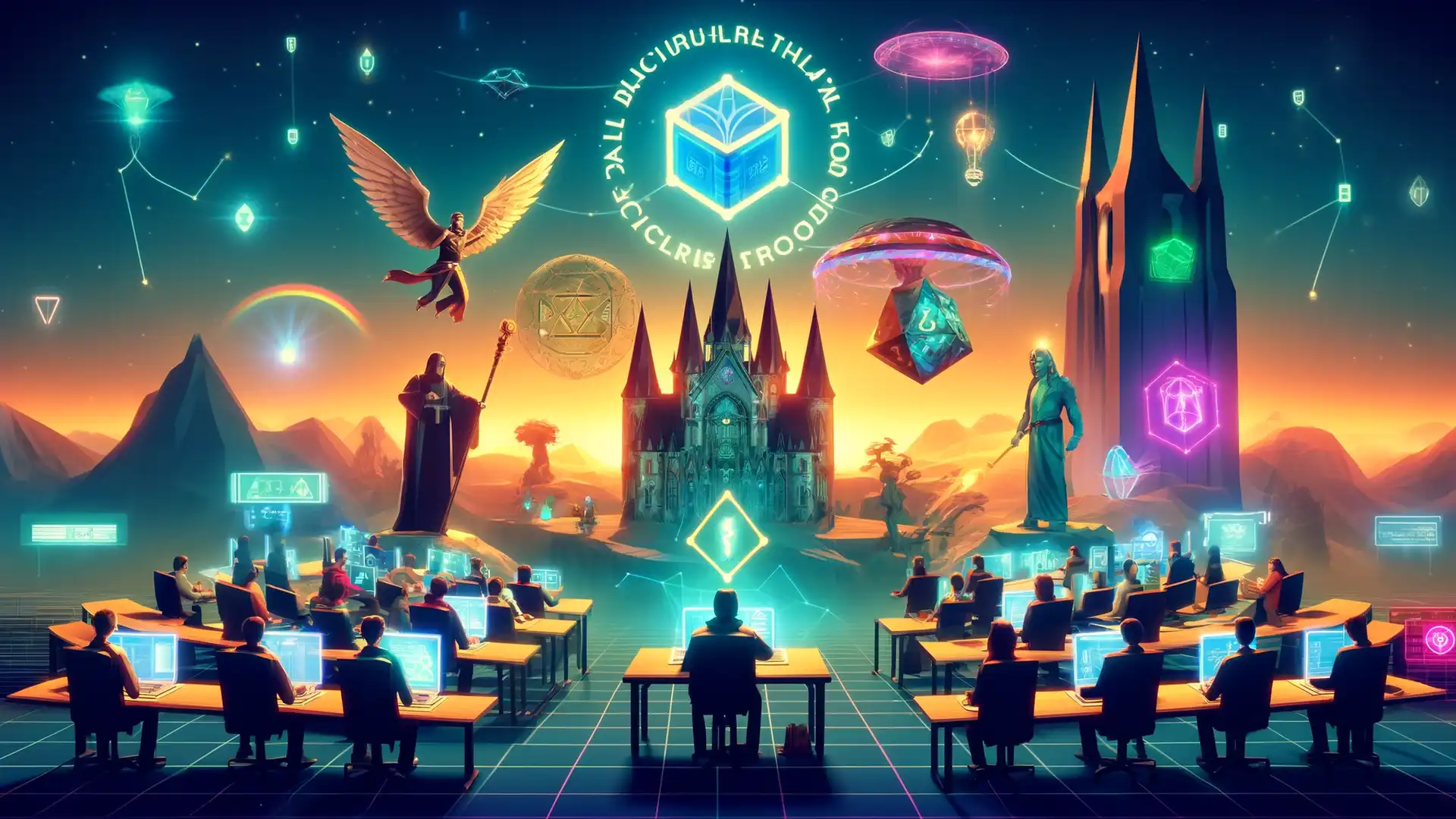Blockchain Overview for Creating Educational NFT Credentials

 Author:
Artem Grigoriev
Author:
Artem Grigoriev
Blockchain Basics and the Advancement of Educational NFTs
Dive into the complex and transformative realm of blockchain technology . It is revolutionizing various sectors, notably education, by providing a robust foundation. Blockchain functions as a decentralized digital ledger. It is distributed across numerous computers, meticulously recording transactions.
📘 This article complements: "The Complete Guide to NFT Credentials". Explore it to find answers to all your questions;)
Its decentralized nature ensures that the ledger is not confined to any single location. Thus, it prevents any single entity from controlling the entire network. This decentralized setup not only enhances the security and transparency of the data but also bolsters its integrity .
The immutability of blockchain ensures that once data is recorded, it cannot be altered. This makes it a formidable tool against fraud and corruption. Notably, experts from the Harvard Business Review highlight how blockchain's decentralized and immutable characteristics significantly reduce the risks. These risks are associated with data tampering and control by a single entity. Thereby, they enhance data trustworthiness and accountability. Insights from Harvard Business Review
This chapter outlines the key components of blockchain, including cryptographic security . It effectively shields information from unauthorized access and manipulation. Cryptographic security employs complex algorithms to encrypt data. Thus, it protects it against unauthorized access.
We explore how these principles are implemented not only in theory but also in practical applications . They are particularly implemented in the education sector through Non-Fungible Tokens (NFTs) . In-depth studies, such as those by Stanford University, affirm the efficacy of cryptographic security. It safeguards sensitive information from cyber threats—critical in the education sector where data security and integrity are paramount. Stanford Research on Cryptography
NFTs are innovative digital assets that represent ownership of unique items or content on a blockchain. These include educational credentials. Envision your diploma as a digital asset on a blockchain: it is secure, unique, and verifiable by anyone, anywhere. This digital representation effectively addresses traditional challenges such as forgery and unnecessary intermediation in the verification process. Thereby, it reduces costs and administrative burdens.
A 2022 study from MIT supports the effectiveness of NFTs in minimizing forgeries. It details how NFT-based credentialing is reshaping the landscape of academic verifications . Thus, making credentials more reliable and easier to manage. MIT Study on Digital Credentials
💡 Note: Blockchain's ability to maintain an immutable and transparent record positions it as an ideal technology. It secures and verifies educational credentials in the form of NFTs. This immutability ensures that once a credential is issued, it remains unchanged and tamper-proof. This provides a reliable and secure verification method.

The adoption of smart contracts marks a significant advancement in managing these digital credentials. Smart contracts are automated, self-executing contracts. Their terms are encoded directly into lines of code. For example, once a student completes a course, the institution can automatically issue a credential via a smart contract. This eliminates the need for manual processing.
This automation not only streamlines procedures but also ensures compliance and minimizes human error. The World Economic Forum notes that smart contracts can enhance compliance and efficiency in education. They automate the issuance of credentials and other essential functions. Thus, simplifying the administrative aspects of education. World Economic Forum on Smart Contracts
The tokenization of educational credentials involves converting the rights to a diploma or certificate into a digital token. This process ensures high integrity and security for credentials. It provides a transparent audit trail accessible to educational institutions, students, and employers. Tokenization streamlines the authentication process. It makes it easier for students to prove their qualifications without bureaucratic delays. Thereby, it enhances their global job market mobility. This facilitates smoother transitions and creates broader opportunities internationally. Digital tokens are recognized and verifiable worldwide.
Understanding the mechanics of blockchain and the transformative potential of NFTs underscores their significant impact on the educational landscape. They make educational credentials more secure, transparent, and accessible. Thereby, enhancing their credibility and reducing barriers between education and career progression.
This shift to digital credentials via blockchain and NFTs offers numerous benefits: - Enhanced security against fraud and tampering. - Ease of verification by employers or other institutions, anywhere, anytime. - Reduction in administrative costs and complexities due to automated processes. This increases the speed and accuracy of credential verification, especially valuable in global education contexts where verification must be rapid and scalable.
Adopting blockchain technology in education represents a shift towards a more digital, secure, and interconnected global education system. It goes beyond just changing how credentials are issued and maintained.
💡 Tip: Institutions aiming to integrate blockchain into their credentialing processes should initiate pilot programs. These programs offer critical insights into the technological needs and necessary adjustments for a smooth transition to digital credentialing. They play a crucial role in understanding the practical implications of blockchain in real-world educational contexts. They help ensure a successful and beneficial transition for all stakeholders.

Implementing and Scaling Blockchain Solutions in Education
This chapter explores the practical applications of blockchain in the educational sector. It highlights a significant transition from traditional credentials to NFT-based educational credentials . The process begins with the strategic tokenization of diplomas and certificates. This ensures their integrity and uniqueness .
This pivotal step involves selecting an appropriate blockchain platform. It aligns with the institution's technological capabilities and standards. It also guarantees that the designed NFTs meet the stringent criteria required for educational credentials. Tokenization effectively converts something tangible, like a diploma, into a digital token on the blockchain . This ensures security and easy verification. Choosing the right platform is crucial, as industry experts emphasize. Compatibility with existing infrastructure is key to the success of the project. Choosing the Right Blockchain
A primary focus here is on the advanced cryptographic techniques used to secure these digital assets. This ensures that data is shielded from unauthorized access and manipulation. Cryptography, the practice of encrypting and decrypting information, secures digital tokens. It is essential for maintaining the trustworthiness and acceptance of blockchain-based credentials. The application of cryptography in blockchain for education adheres to rigorous standards. These standards are akin to those in financial transactions, thus boosting security and trust. Cryptography in Blockchain
However, implementing blockchain in education presents challenges such as scalability. This is especially true during high transaction periods like enrollment or graduation. This chapter examines various innovative solutions that help institutions maintain performance, while upholding blockchain's principles of security and decentralization. These solutions include: - Layer-two scaling solutions - Sidechains - Off-chain computations
Practical examples in this section demonstrate their effectiveness in educational settings, particularly during peak times. Understanding Blockchain Scalability
Another critical aspect covered is cost efficiency. Blockchain technology can significantly reduce administrative overhead. This is achieved by automating processes that typically require manual effort and third-party verification. This automation not only cuts costs but also speeds up processes , ranging from issuing to verifying credentials. Reports suggest that blockchain could decrease university administrative costs by up to 30%. Reducing Costs with Blockchain
💡 Note: Blockchain's ability to secure, verify, and permanently record educational achievements globally is transforming the issuance and recognition of credentials.

Privacy protection is also a key focus in this chapter. It details how blockchain can enhance privacy through: - Advanced encryption techniques - Selective permission systems
These systems restrict access to student data to authorized parties only, thus protecting sensitive information from breaches. Implementing these privacy-enhancing technologies not only meets regulatory requirements, such as GDPR, but also bolsters the institution's reputation for data security. Blockchain and Privacy Protection
Real-world implementations offer practical insights. Case studies from various universities and educational institutions show successful integrations of NFTs for issuing credentials. These examples emphasize the enhanced credibility and global recognition that blockchain brings to academic programs. For instance, the University of Nicosia utilizes blockchain to issue credentials. This enhances trust and efficiency in their certification process. University of Nicosia Case Study
Looking ahead, the chapter discusses future trends in blockchain within the education sector. Topics include: - The potential rise of decentralized autonomous organizations (DAOs) in educational governance - The integration of artificial intelligence for personalized learning experiences - How blockchain might facilitate cross-institutional and international academic collaborations
This could potentially revolutionize the delivery and consumption of educational content. It fosters a more adaptive, personalized learning environment.
By delving into these advancements, the chapter not only offers a detailed roadmap for educational institutions considering blockchain. It also underscores the broader implications for accessibility and inclusivity in education. These technological shifts promise a more democratized and interconnected educational landscape. They enable institutions to provide a more equitable and tailored educational experience to students worldwide.
💡 Tip: Educational institutions should engage with blockchain experts and technology consultants to tailor blockchain solutions to align with their specific needs and capabilities. Working with such expertise can hasten the deployment of blockchain solutions and mitigate risks associated with new technologies.

Compatibility of Educational NFT Credentials with Various Platforms
Designing Educational NFT Credentials: Ideas, Best Practices, and Examples
Customizing and Personalizing Educational NFT Credentials
Developing a Curriculum Using NFT Credentials and Blockchain
Challenges and Limitations of NFT Credentials in Education
